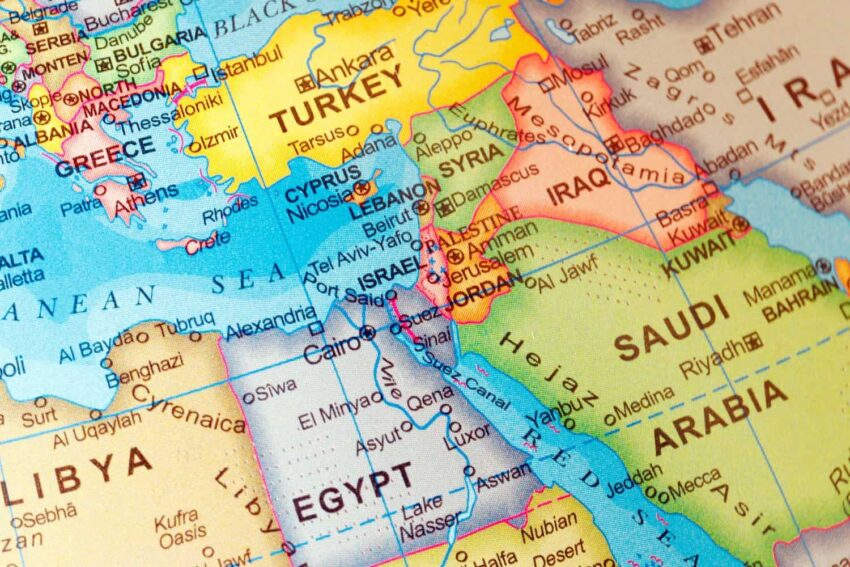Key Points
-
Middle Eastern military supremacy has been the subject of global discussion this summer as Israel and Iran traded blows over the course of two weeks
-
Iran’s vast population continues to serve as a powerful resource for its military. Each year, roughly 1.4 million Iranians reach military age
-
Israel’s comparable figure falls short of Iran’s by a factor of ten
- Are you ahead, or behind on retirement? SmartAsset’s free tool can match you with a financial advisor in minutes to help you answer that today. Each advisor has been carefully vetted, and must act in your best interests. Don’t waste another minute; get started by clicking here.(Sponsor)
Middle Eastern military supremacy has been the subject of global discussion this summer as Israel and Iran traded blows over the course of two weeks. While there has been discussion at length regarding the military assets that each of these nations is fielding, there is still an important factor when it comes to any conflict that has not been as widely addressed-manpower.
Iran’s vast population continues to serve as a powerful resource for its military. Each year, roughly 1.4 million Iranians reach military age. This comes second only to Pakistan in the region, but dwarfs all other regional rivals. For instance, Israel’s comparable figure falls short of Iran’s by a factor of ten. This demographic advantage offers Iran a fairly large pool of potential recruits, allowing it to sustain a sizable force despite economic sanctions brought on by the global community.
It’s no secret that Israel and most other Middle Eastern powers are outpaced by Iran’s population, and this in and of itself confers an interesting advantage to the Islamic Republic. Here, 24/7 Wall St. is exploring Middle Eastern nations and their demographics that are reaching military age annually.
To determine the Middle Eastern countries with the most people reaching military age annually, 24/7 Wall St. reviewed the 2025 Military Strength Ranking from Global Firepower, an annually updated defense-related statistics website with information on 145 countries. Global Firepower ranked 145 countries based on their PowerIndex, a composite of over 60 measures in categories such as military might, financials, logistical capability, and geography. The smaller the PowerIndex value the more powerful a nation’s theoretical conventional fighting capability is. We ranked these countries based on their population reaching military age annually. We also included supplemental information regarding active military personnel, reserves, paramilitary forces and total military personnel as well as each country’s overall strength score and defense budget.
Here is a look at the Middle Eastern countries with the most people reaching military age annually:
Why Are We Covering This?
Understanding the military dynamics in the Middle East is essential given the region’s historical and ongoing geopolitical tensions. For decades, the Middle East has been shaped by conflicts, religious divisions, and territorial disputes, making it a hotspot for conflict. Whether it’s Iran’s growing influence or the strategic role of countries like Saudi Arabia and Israel, the military forces in this region heavily influence global security and energy markets.
17. Qatar
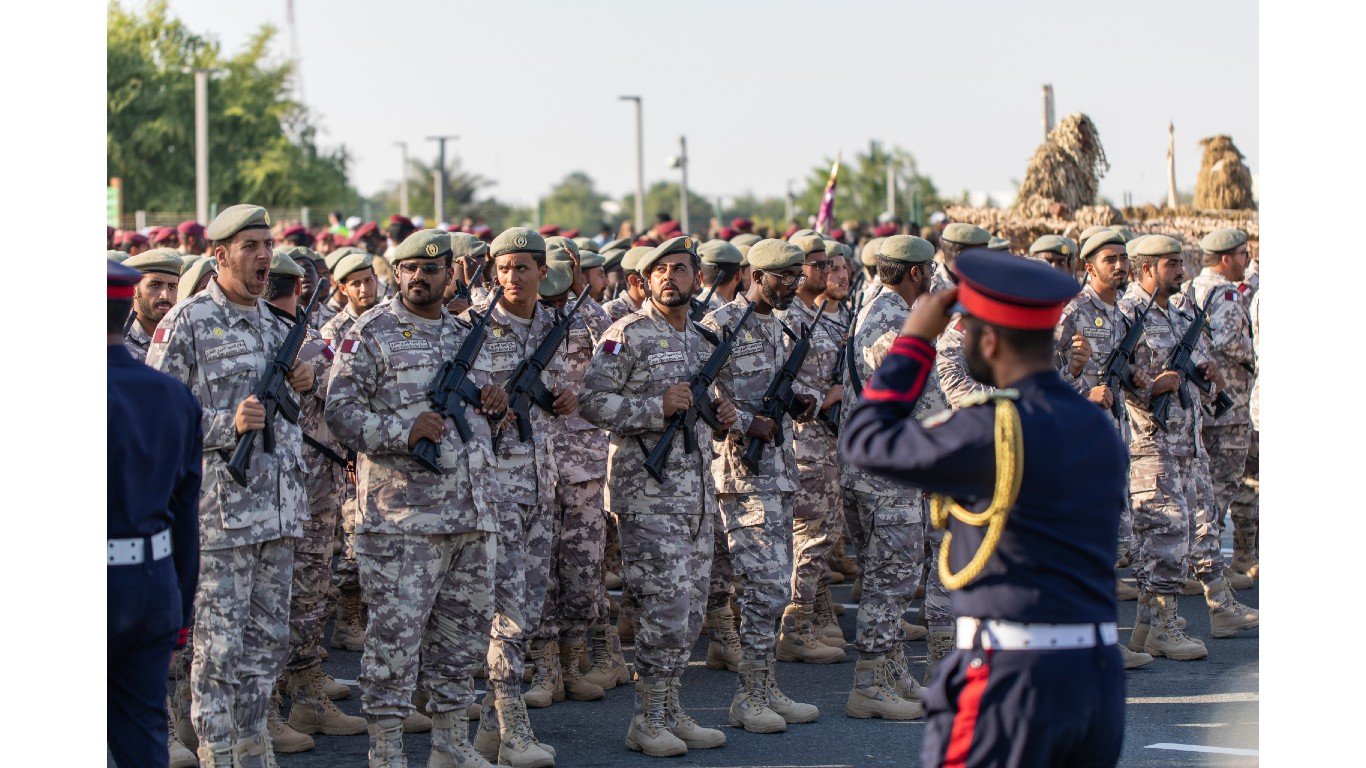
- Population reaching military age annually: 12,760
- Fit-for-service: 490,001
- Active military personnel: 66,550
- Reserve military personnel: 15,000
- Paramilitary personnel: 5,500
- Total military personnel: 87,050
- Military defense budget: $9,432,000,000 – #34 out of 145
- Military strength score and world rank: 1.4307 – #72 out of 145
Qatar has a total population of 2.552 million. Along with its troops, this country has 115 naval vessels, 251 military aircraft, and 5,024 military vehicles (including 99 tanks, 16 MLRS units, and 58 artillery units).
Located on the Arabian Peninsula, Qatar maintains vast natural gas and oil reserves. Since gaining independence from Britain in 1971, Qatar has rapidly modernized its armed forces, fueled by its rising economic power from energy exports. Like other nations in the region, Qatar has acquired advanced military technology from Western powers. Qatar is also particularly focused on building up its naval capabilities to defend its coastline and safeguard its energy infrastructure.
16. Bahrain
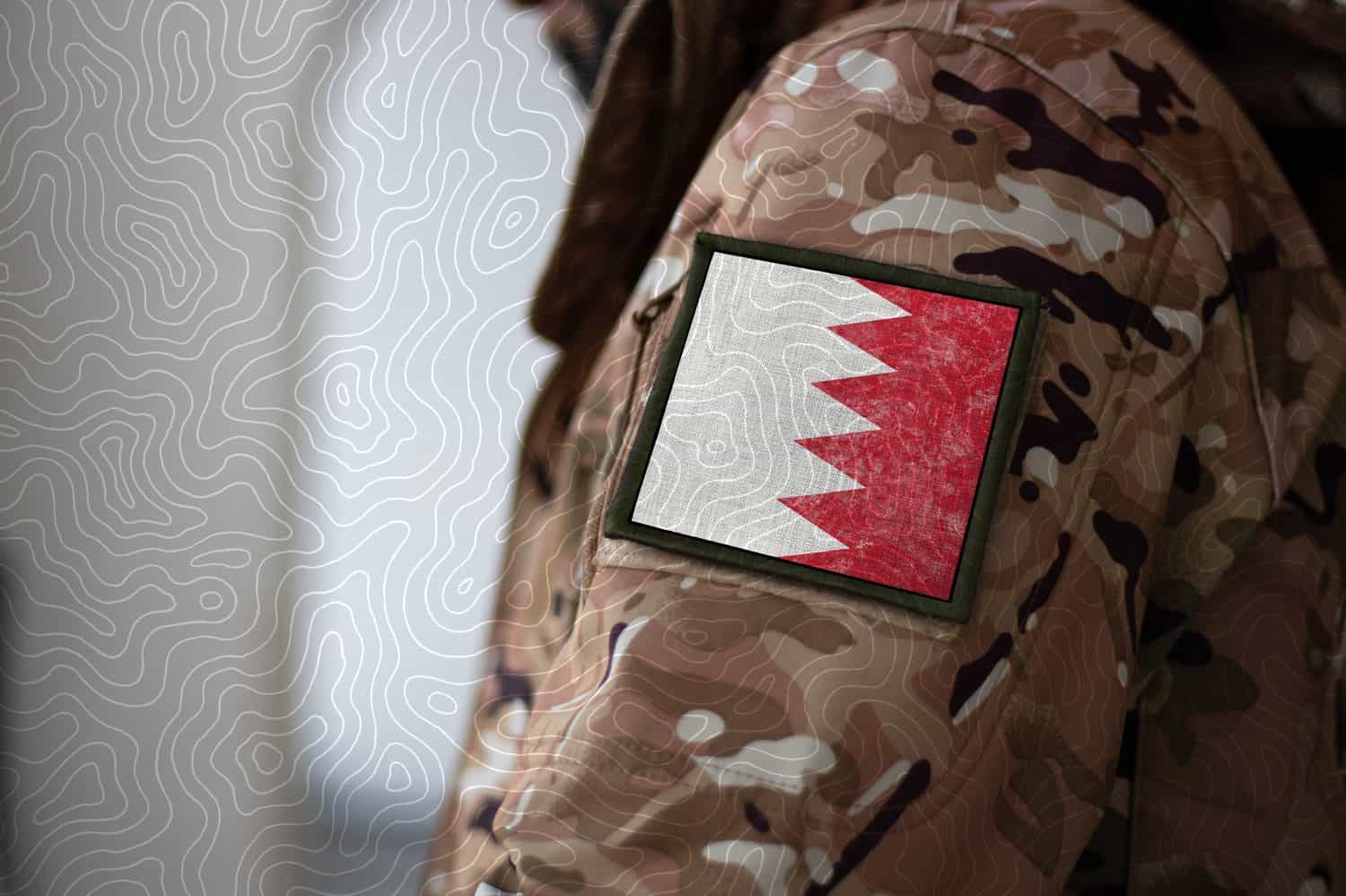
- Population reaching military age annually: 17,236
- Fit-for-service: 720,768
- Active military personnel: 18,400
- Reserve military personnel: 110,000
- Paramilitary personnel: 1,500
- Total military personnel: 129,900
- Military defense budget: $1,597,200,000 – #75 out of 145
- Military strength score and world rank: 1.7448 – #81 out of 145
Bahrain has a total population of 1.567 million. Along with its troops, this country has 64 naval vessels, 132 military aircraft, and 2,764 military vehicles (including 150 tanks, 17 MLRS units, and 64 artillery units).
Bahrain may be one of the smaller Middle Eastern nations, but its strategic location in the Persian Gulf has given it outsized importance. Historically, this island nation was occupied by the Portuguese in the 16th century, then came under Persian and Ottoman influence before becoming a British protectorate in the 19th century. Gaining independence in 1971, Bahrain established its own military and defense forces, steadily building its capabilities. Its long-standing ties with Western powers, particularly the U.S. and U.K., have helped modernize its forces, especially its navy.
15. Kuwait
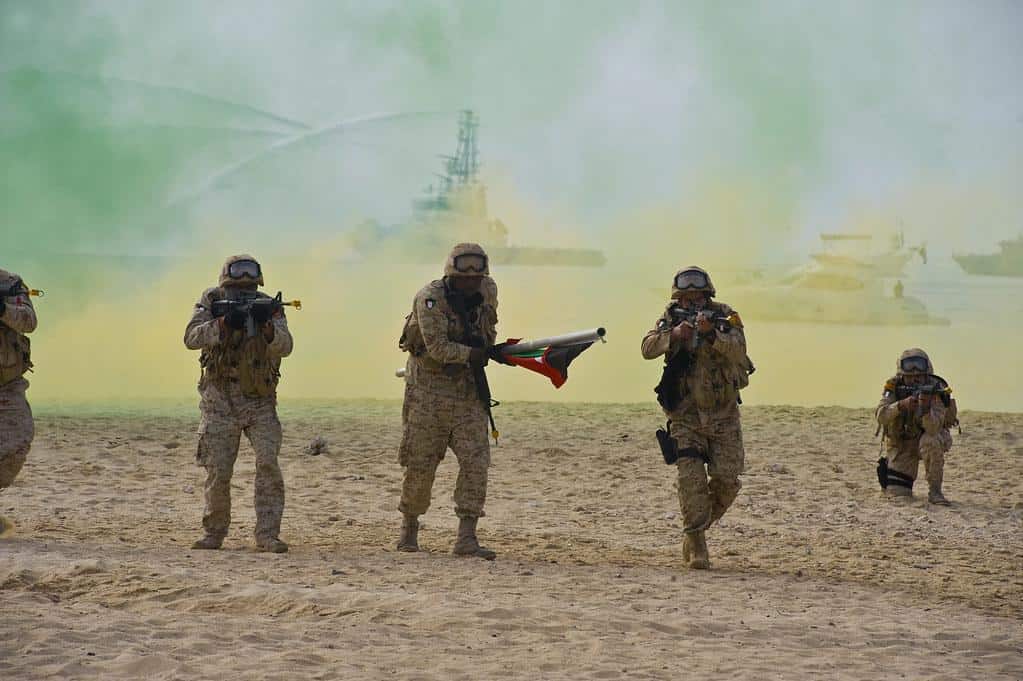
- Population reaching military age annually: 37,660
- Fit-for-service: 1,449,920
- Active military personnel: 72,000
- Reserve military personnel: 24,000
- Paramilitary personnel: 7,500
- Total military personnel: 103,500
- Military defense budget: $6,950,000,000 – #41 out of 145
- Military strength score and world rank: 1.6982 – #79 out of 145
Kuwait has a total population of 3.138 million. Along with its troops, this country has 123 naval vessels, 128 military aircraft, and 5,636 military vehicles (including 367 tanks, 27 MLRS units, and 74 artillery units).
Kuwait’s strategic location at the northern edge of the Persian Gulf has long shaped its military history. This nation was once under Ottoman rule, but it became a British protectorate before gaining independence in 1961. The most defining chapter came in 1990, when Iraq invaded Kuwait over oil disputes and debt, leading to the Gulf War. An international coalition intervened to liberate the country. The invasion showed Kuwait’s vulnerability and reinforced its need for strong defense partnerships, particularly with Western allies.
14. Oman

- Population reaching military age annually: 50,726
- Fit-for-service: 1,291,559
- Active military personnel: 42,600
- Reserve military personnel: 100,000
- Paramilitary personnel: 10,000
- Total military personnel: 152,600
- Military defense budget: $8,200,000,000 – #36 out of 145
- Military strength score and world rank: 1.8047 – #82 out of 145
Oman has a total population of 3.902 million. Along with its troops, this country has 22 naval vessels, 128 military aircraft, and 4,084 military vehicles (including 150 tanks and 164 artillery units).
Oman was a formidable empire in the 17th and 18th centuries, with naval strength and colonies across the Indian Ocean that allowed it to push back against Portuguese and Persian influence. Its military capabilities advanced significantly in the 19th century through an alliance with the British Empire, which helped modernize its forces as well. In recent decades, Oman has largely stayed neutral in regional conflicts, choosing instead to prioritize national defense.
13. Lebanon

- Population reaching military age annually: 69,738
- Fit-for-service: 1,775,644
- Active military personnel: 60,000
- Reserve military personnel: 35,000
- Paramilitary personnel: 65,000
- Total military personnel: 160,000
- Military defense budget: $768,250,325 – #97 out of 145
- Military strength score and world rank: 2.5981 – #115 out of 145
Lebanon has a total population of 5.364 million. Along with its troops, this country has 64 naval vessels, 80 military aircraft, and 4,538 military vehicles (including 116 tanks, 11 MLRS units, and 365 artillery units).
Located on the Mediterranean, Lebanon has found itself at the center of numerous regional conflicts. Since gaining its independence from France in 1943, the country’s makeup of religious and ethnic groups has posed some internal challenges. The Lebanese Civil War, beginning in 1975, drew in multiple factions and foreign powers. In the years since, Lebanon’s military has focused on rebuilding and modernization. Even though it is a relatively small country, Lebanon plays an important role in maintaining regional security, managing tensions with non-state actors like Hezbollah, and addressing ongoing border issues with Israel.
12. United Arab Emirates
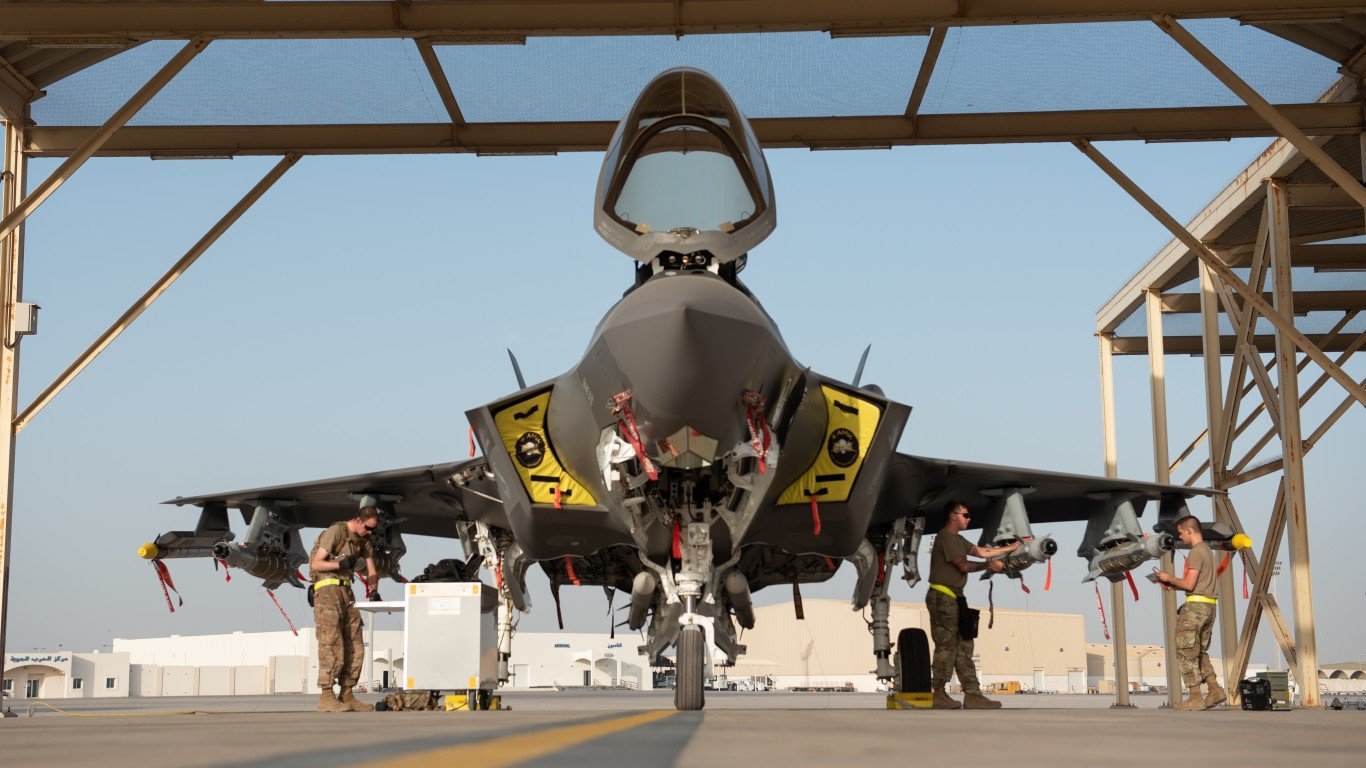
- Population reaching military age annually: 80,258
- Fit-for-service: 4,945,881
- Active military personnel: 65,000
- Reserve military personnel: 130,000
- Paramilitary personnel: 12,000
- Total military personnel: 207,000
- Military defense budget: $2,212,360,382 – #70 out of 145
- Military strength score and world rank: 1.0186 – #54 out of 145
United Arab Emirates has a total population of 10.03 million. Along with its troops, this country has 181 naval vessels, 551 military aircraft, and 8,707 military vehicles (including 354 tanks, 49 MLRS units, and 264 artillery units).
The United Arab Emirates (UAE) has a relatively young but dynamic military history. Formed in 1971 through the union of seven emirates, the country prioritized building a modern military. With weaponry largely supplied by the U.S. and France, the UAE has taken part in operations in the Gulf War, Yemen, and against ISIS. Despite its small size, the UAE has established military bases in the Horn of Africa and other strategic regions
11. Israel

- Population reaching military age annually: 131,637
- Fit-for-service: 3,281,513
- Active military personnel: 170,000
- Reserve military personnel: 465,000
- Paramilitary personnel: 35,000
- Total military personnel: 670,000
- Military defense budget: $30,500,000,000 – #17 out of 145
- Military strength score and world rank: 0.2661 – #15 out of 145
Israel has a total population of 9.403 million. Along with its troops, this country has 62 naval vessels, 611 military aircraft, and 35,985 military vehicles (including 1,300 tanks, 183 MLRS units, and 523 artillery units).
Israel’s military history is central to its national identity, reinforced by compulsory service for most citizens. Founded in 1948, Israel was immediately thrust into war with neighboring Arab states. Since then, it has remained at the heart of regional conflict, even continuing to this day. Key wars include the Suez Crisis, Six-Day War, and Yom Kippur War, along with repeated clashes in Lebanon. In many of these, Israel not only survived but expanded its territory. Its most recent conflict with Iran has raised more questions than it has answered, and the fallout of this is still yet to be seen in its entirety.
10. Jordan
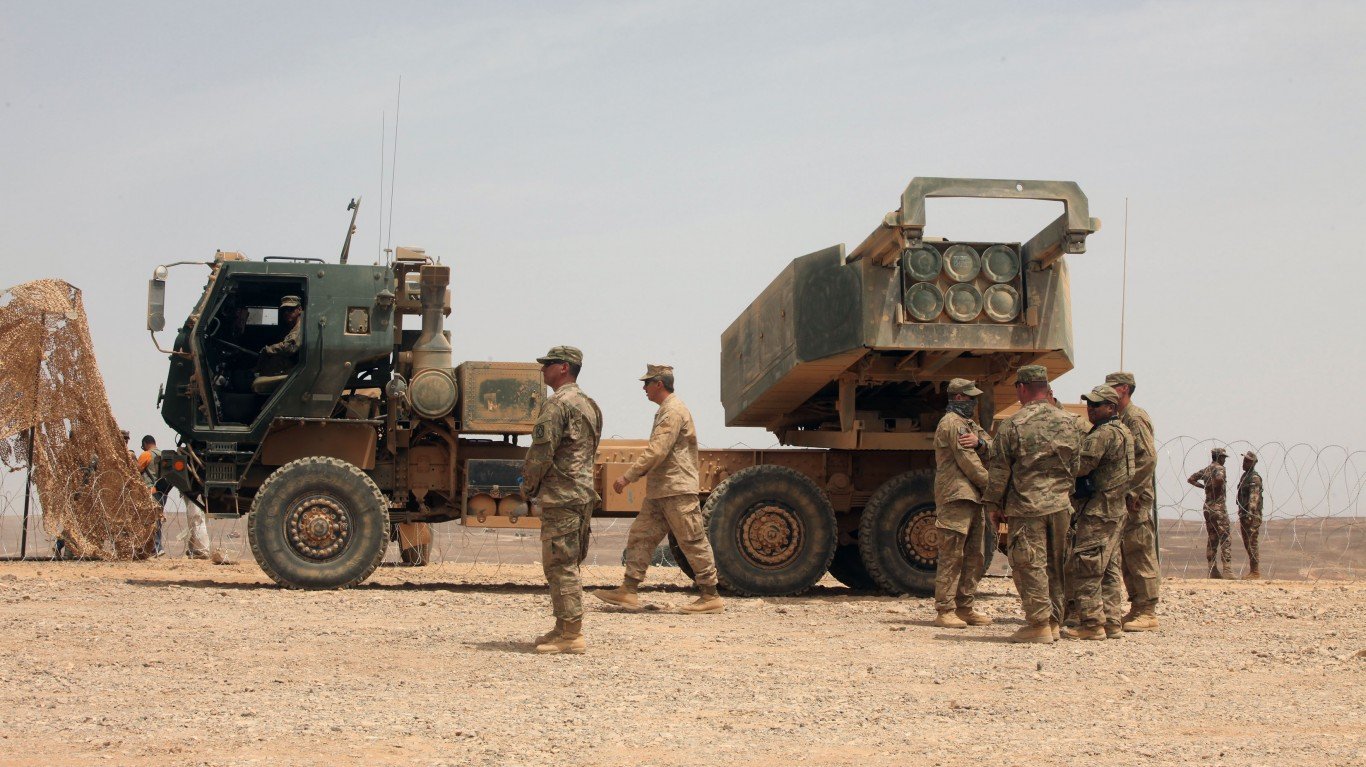
- Population reaching military age annually: 145,262
- Fit-for-service: 2,983,464
- Active military personnel: 100,500
- Reserve military personnel: 65,000
- Paramilitary personnel: 35,000
- Total military personnel: 200,500
- Military defense budget: $2,500,000,000 – #65 out of 145
- Military strength score and world rank: 1.6139 – #76 out of 145
Jordan has a total population of 11.17 million. Along with its troops, this country has 27 naval vessels, 274 military aircraft, and 16,624 military vehicles (including 1,458 tanks, 56 MLRS units, and 438 artillery units).
Jordan, like many other of these Middle Eastern nations, has a rich military history. The Hashemite Kingdom was formed after World War I from the remnants of the Ottoman Empire and gained full independence from Britain in 1946. Jordan fought in a few conflicts with Israel, including the 1948 Arab-Israeli War and the 1967 Six-Day War, where it lost the West Bank. These wars would define its modern borders and military posture. Today, Jordan maintains strong ties with Western powers, supports military modernization, and plays a stabilizing role in the region, having served as a mediator in peace talks.
9. Yemen
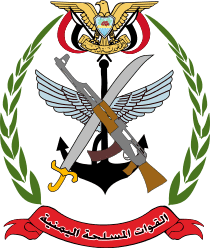
- Population reaching military age annually: 610,668
- Fit-for-service: 9,031,464
- Active military personnel: 66,700
- Reserve military personnel: 0
- Paramilitary personnel: 20,000
- Total military personnel: 86,700
- Military defense budget: $810,375,000 – #94 out of 145
- Military strength score and world rank: 1.8901 – #85 out of 145
Yemen has a total population of 32.14 million. Along with its troops, this country has 33 naval vessels, 84 military aircraft, and 550 military vehicles (including 10 MLRS units and 15 artillery units).
Yemen is currently a warzone. The country has been in a civil war since 2014, while this conflict is fairly complex in terms of the breakdown, there is a religious aspect that simplifies it along Sunni and Shia lines. Also, countries like Saudi Arabia and Iran have been involving themselves in providing weapons or aid to the opposing factions.
8. Saudi Arabia
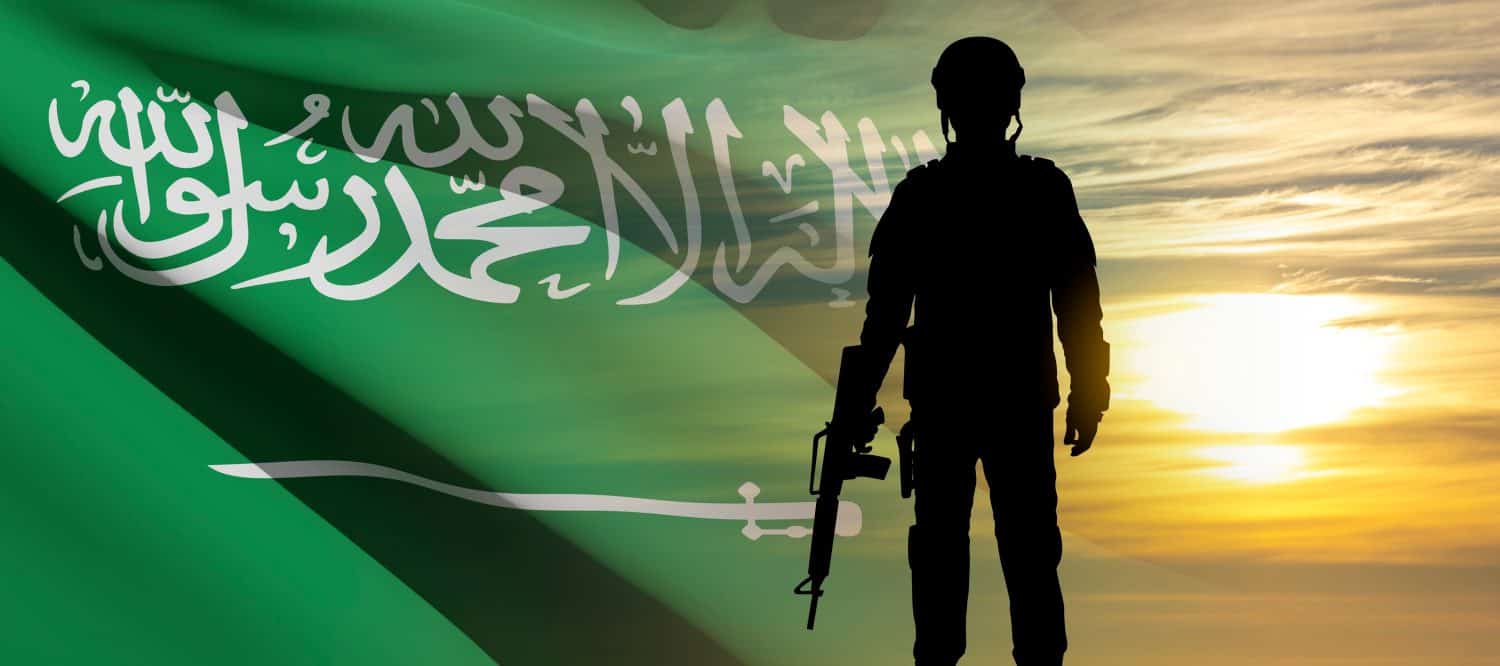
- Population reaching military age annually: 621,255
- Fit-for-service: 17,468,238
- Active military personnel: 257,000
- Reserve military personnel: 0
- Paramilitary personnel: 150,000
- Total military personnel: 407,000
- Military defense budget: $74,760,000,000 – #5 out of 145
- Military strength score and world rank: 0.4201 – #25 out of 145
Saudi Arabia has a total population of 36.54 million. Along with its troops, this country has 32 naval vessels, 917 military aircraft, and 19,040 military vehicles (including 840 tanks, 321 MLRS units, and 799 artillery units).
Saudi Arabia’s military history goes back centuries, but its modern state was officially founded in 1932 after Ibn Saud unified the region. The discovery of oil in the 1930s elevated the Kingdom’s global standing, especially with its lucrative trade with Western powers. This wealth enabled Saudi Arabia to acquire advanced weaponry and aircraft, solidifying its position as a dominant regional power. The country also played a key role in the Gulf War, joining the coalition to expel Iraqi forces from Kuwait.
7. Syria
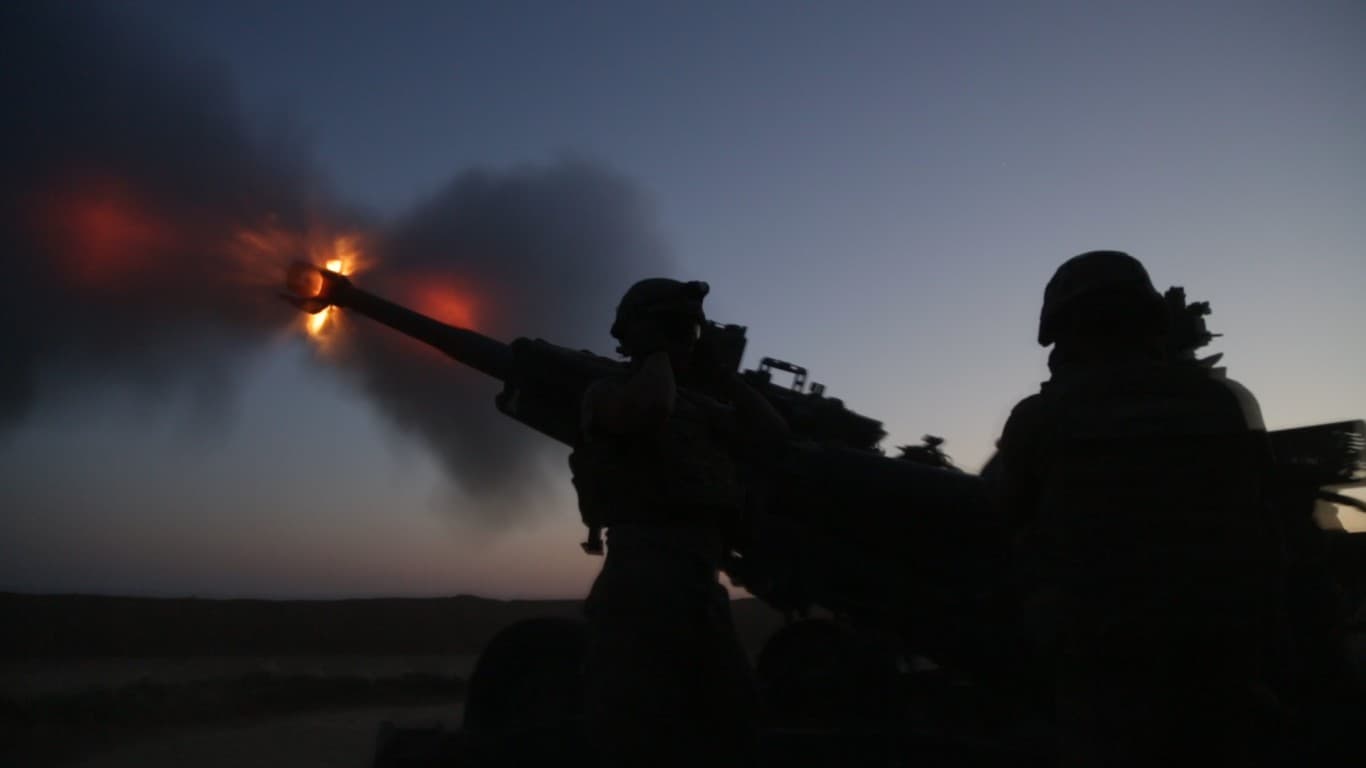
- Population reaching military age annually: 668,232
- Fit-for-service: 13,245,310
- Active military personnel: 170,000
- Reserve military personnel: 50,000
- Paramilitary personnel: 50,000
- Total military personnel: 270,000
- Military defense budget: $291,850,000 – #124 out of 145
- Military strength score and world rank: 1.2771 – #64 out of 145
Syria has a total population of 23.87 million. Along with its troops, this country has 27 naval vessels, 207 military aircraft, and 11,148 military vehicles (including 365 tanks, 204 MLRS units, and 731 artillery units).
Shaped largely by its strategic location bridging the Mediterranean and the Arab world, Syria has been a focal point of empires and modern conflicts alike down through the ages. After gaining independence from France in 1946, Syria became involved in multiple wars with Israel and played a role in the Lebanese Civil War. Its most defining recent conflict began in 2011 with the Syrian Civil War, sparked by Arab Spring protests.
6. Iraq
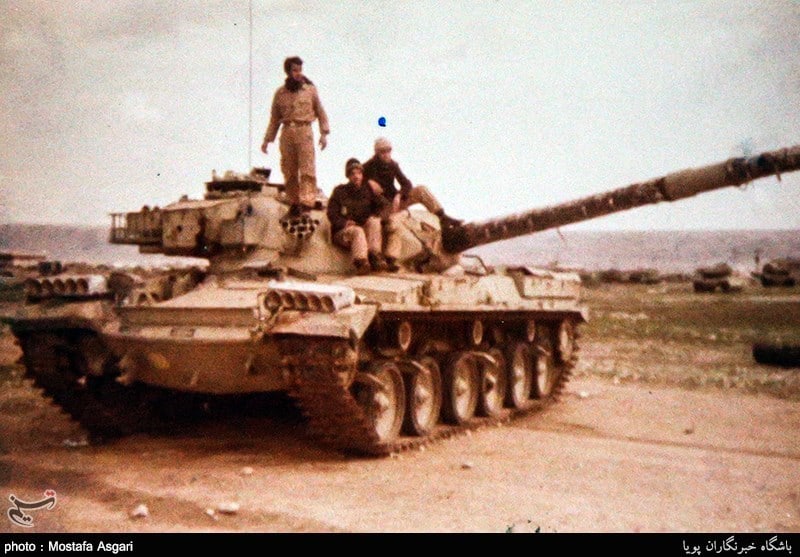
- Population reaching military age annually: 715,418
- Fit-for-service: 14,308,368
- Active military personnel: 193,000
- Reserve military personnel: 0
- Paramilitary personnel: 100,000
- Total military personnel: 293,000
- Military defense budget: $7,923,000,000 – #37 out of 145
- Military strength score and world rank: 0.7738 – #43 out of 145
Iraq has a total population of 42.08 million. Along with its troops, this country has 68 naval vessels, 391 military aircraft, and 37,288 military vehicles (including 1,025 tanks, 572 MLRS units, and 1044 artillery units).
Iraq gained independence from Britain in 1932 but remained under its influence until the late 1950s. Saddam Hussein came to power in 1979 under the Ba’ath Party, further expanding the Iraqi military and launching the Iran-Iraq War just a year later.. His 1990 invasion of Kuwait instigated the Gulf War, and later a U.S.-led invasion in 2003 ultimately leading to his demise. Currently, Iraq is focused on rebuilding its military while addressing ongoing internal security challenges.
5. Afghanistan
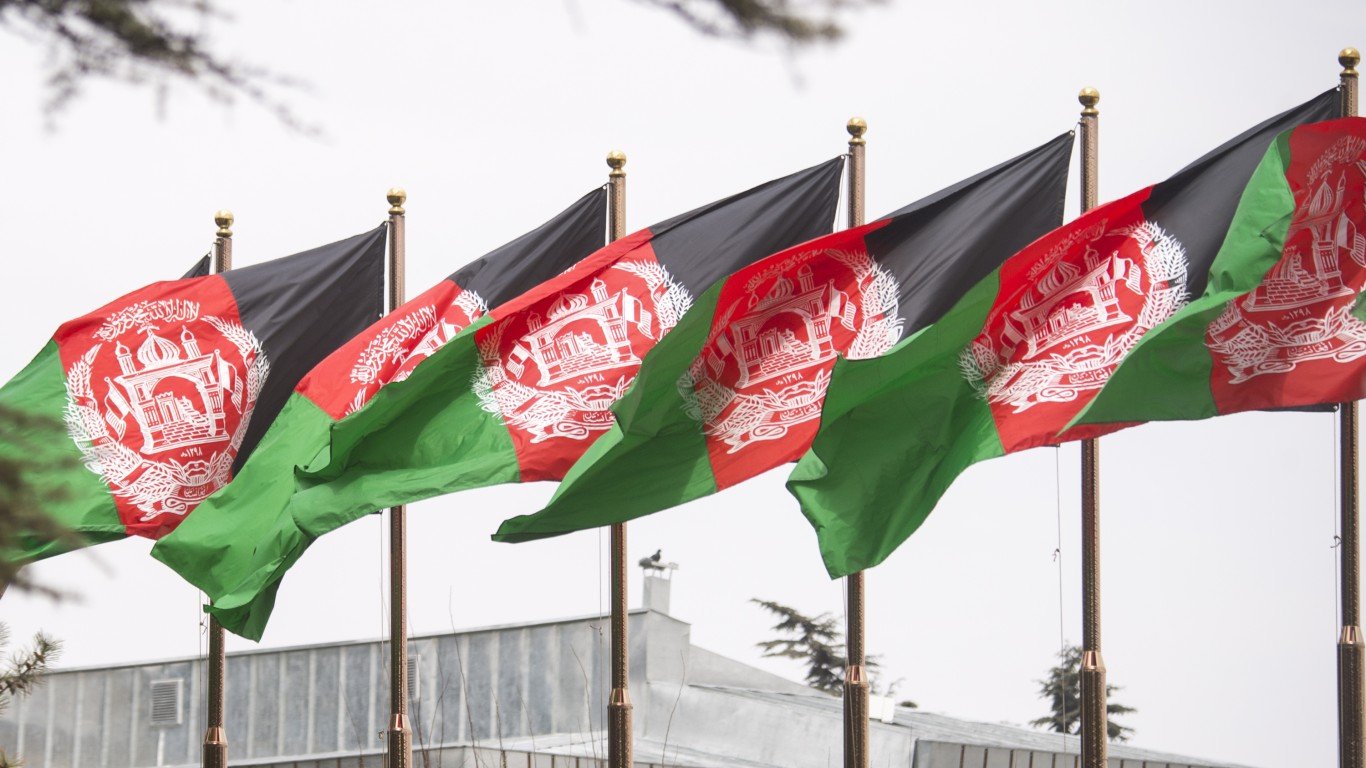
- Population reaching military age annually: 842,553
- Fit-for-service: 8,826,741
- Active military personnel: 0
- Reserve military personnel: 0
- Paramilitary personnel: 80,000
- Total military personnel: 80,000
- Military defense budget: $290,000,000 – #125 out of 145
- Military strength score and world rank: 2.6442 – #118 out of 145
Afghanistan has a total population of 40.12 million. Along with its troops, this country has 9 military aircraft and 5,202 military vehicles.
Afghanistan has long been called the “Graveyard of Empires,” having resisted invasions dating back to Alexander the Great and even on to the Mongols. While foreign powers have taken the country, none have held it for long. This proved true even in the 20th century, as Afghanistan was a hotspot during the Cold War. The Soviet invasion in 1979 sparked a decade-long war, followed by civil unrest and the rise of the Taliban. The U.S. occupation decades later would follow a similar path with a chaotic exit, ultimately returning the country to Taliban control.
4. Iran
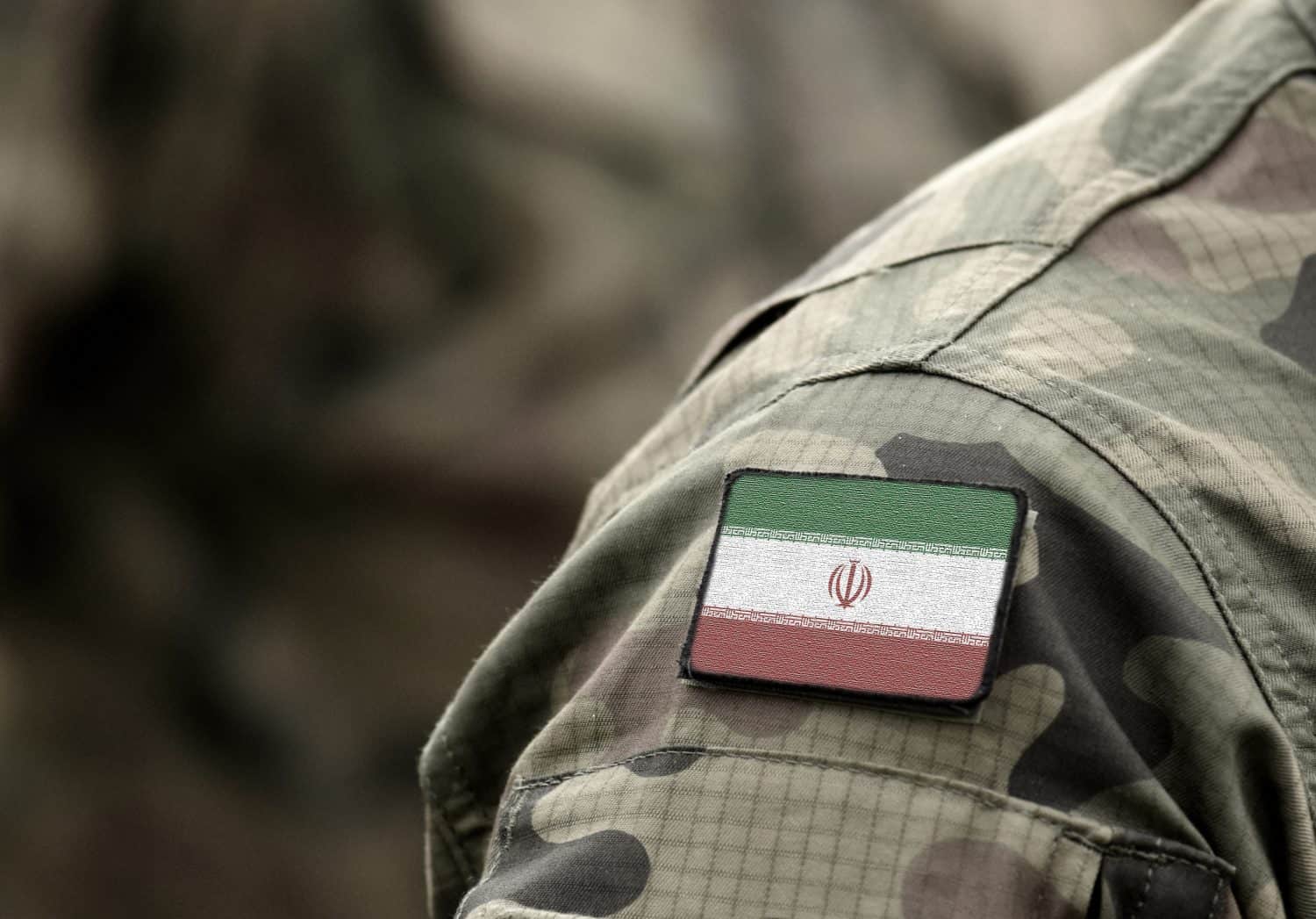
- Population reaching military age annually: 1,414,191
- Fit-for-service: 41,541,860
- Active military personnel: 610,000
- Reserve military personnel: 350,000
- Paramilitary personnel: 220,000
- Total military personnel: 1,180,000
- Military defense budget: $15,450,000,000 – #25 out of 145
- Military strength score and world rank: 0.3048 – #16 out of 145
Iran has a total population of 88.39 million. Along with its troops, this country has 107 naval vessels, 551 military aircraft, and 65,825 military vehicles (including 1,713 tanks, 1,517 MLRS units, and 2,462 artillery units).
Iran’s military roots stretch back to the ancient Persian Empire, giving it a long and rich history. Today, it’s viewed by many Western powers as a regional antagonist, leading to sanctions that have hindered its military modernization. Despite these constraints, Iran maintains a formidable military with a seemingly endless supply of rockets and artillery. Iran’s recent conflict with Israel proved the resolve of its military and that it will not so easily be defeated.
3. Turkey
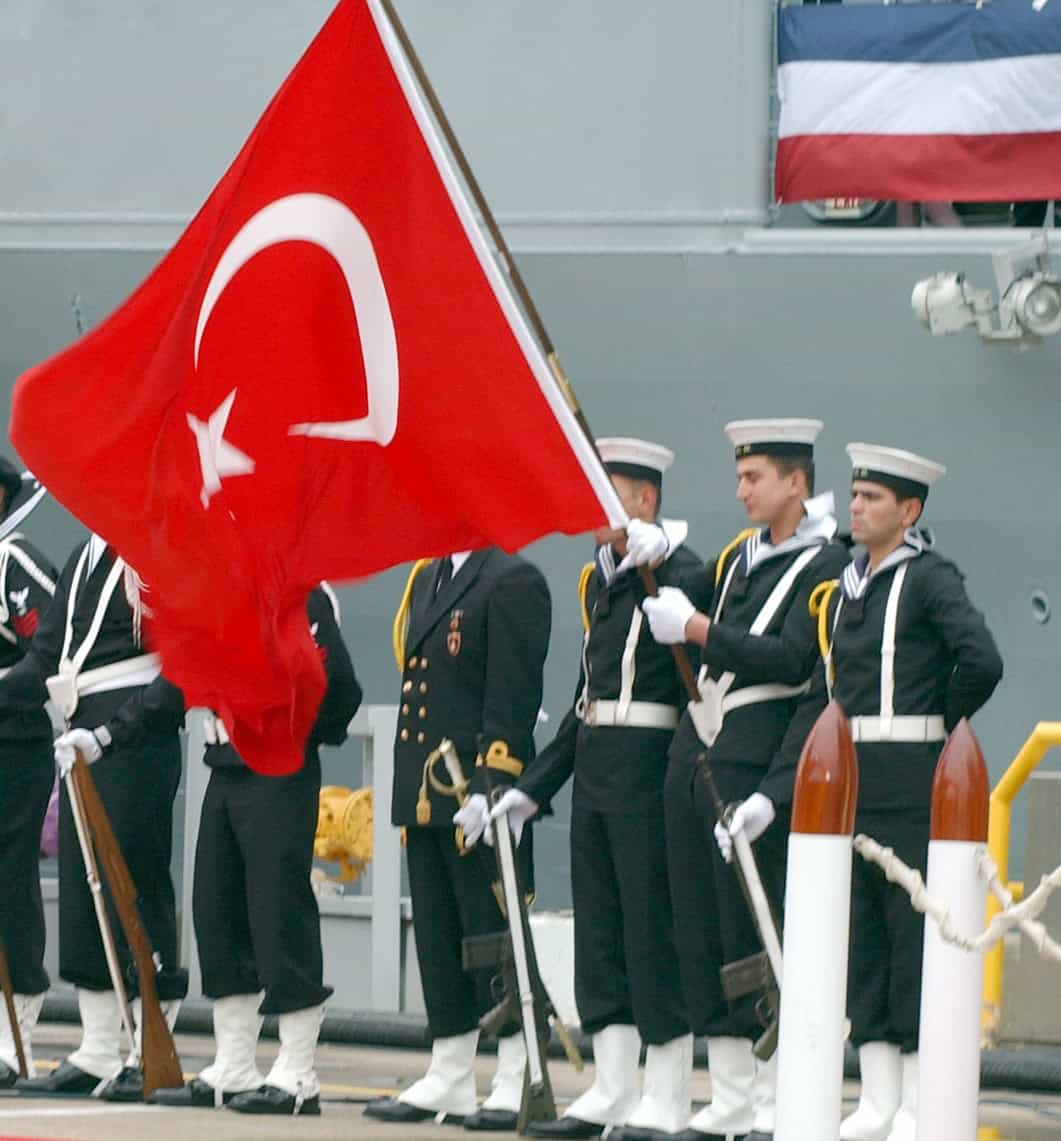
- Population reaching military age annually: 1,430,032
- Fit-for-service: 36,087,279
- Active military personnel: 355,200
- Reserve military personnel: 378,700
- Paramilitary personnel: 150,000
- Total military personnel: 883,900
- Military defense budget: $47,000,000,000 – #13 out of 145
- Military strength score and world rank: 0.1902 – #9 out of 145
Turkey has a total population of 84.12 million. Along with its troops, this country has 182 naval vessels, 1,083 military aircraft, and 61,173 military vehicles (including 2,238 tanks, 296 MLRS units, and 2,745 artillery units).
Turkey’s military history is deeply rooted in its legacy as the heart of the Ottoman Empire. Its strategic position between Europe and Asia has largely dictated the composition of its forces, and helped to secure its place in NATO. The fall of the Ottoman Empire after World War I and the Turkish War of Independence gave shape to the nation and its borders.
2. Egypt
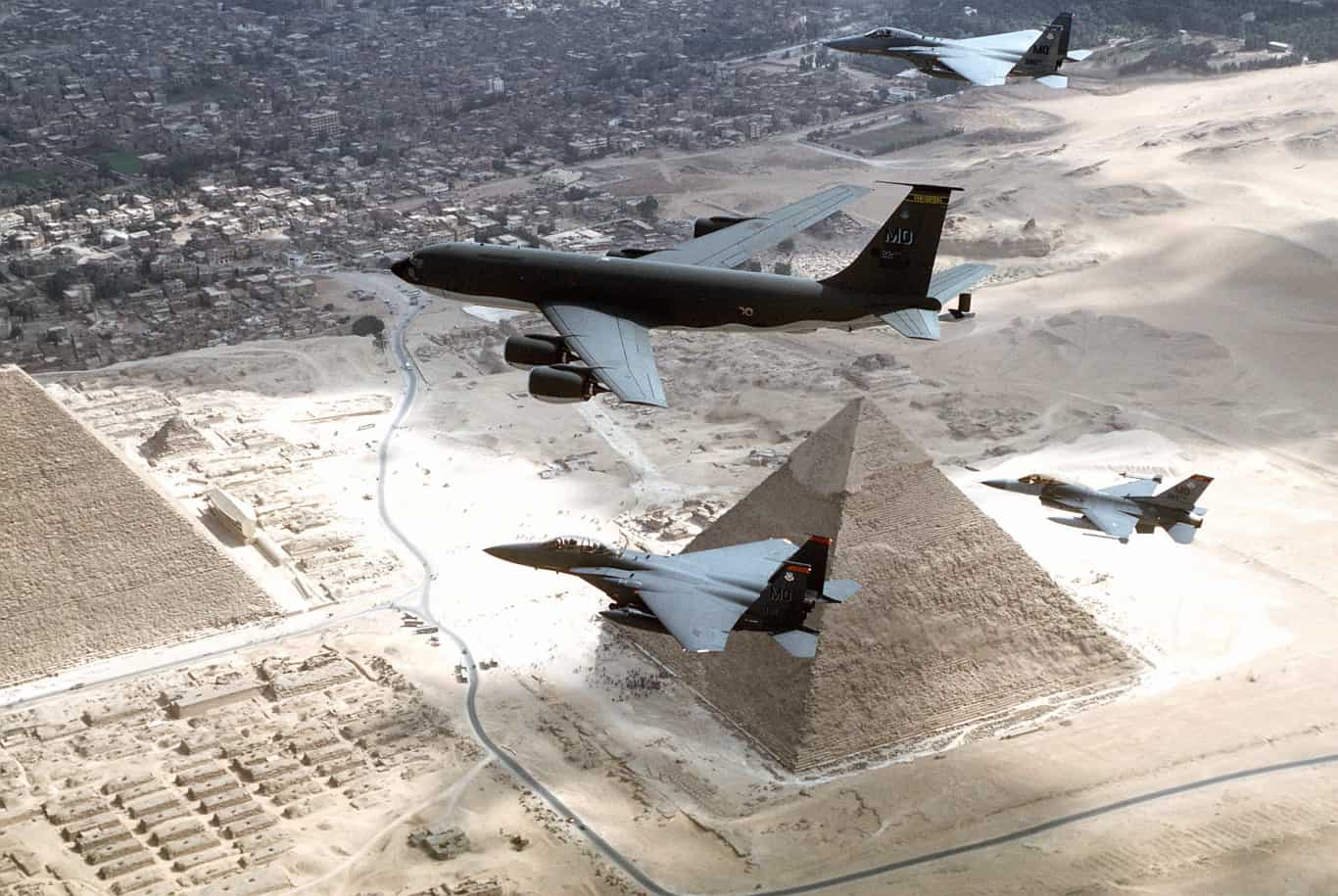
- Population reaching military age annually: 1,668,709
- Fit-for-service: 38,269,053
- Active military personnel: 440,000
- Reserve military personnel: 480,000
- Paramilitary personnel: 300,000
- Total military personnel: 1,220,000
- Military defense budget: $5,879,500,000 – #46 out of 145
- Military strength score and world rank: 0.3427 – #19 out of 145
Egypt has a total population of 111.25 million. Along with its troops, this country has 150 naval vessels, 1,093 military aircraft, and 41,012 military vehicles (including 3,620 tanks, 528 MLRS units, and 2,018 artillery units).
Egypt straddles the Middle East and Africa and controls the Suez Canal, a key shipping lane on the global stage. From the days of the Pharaohs to the present, Egypt has been a regional military power. However, more recently, its military relies less on swords and horses but instead on its massive arsenal of advanced aircraft and tanks.
1. Pakistan
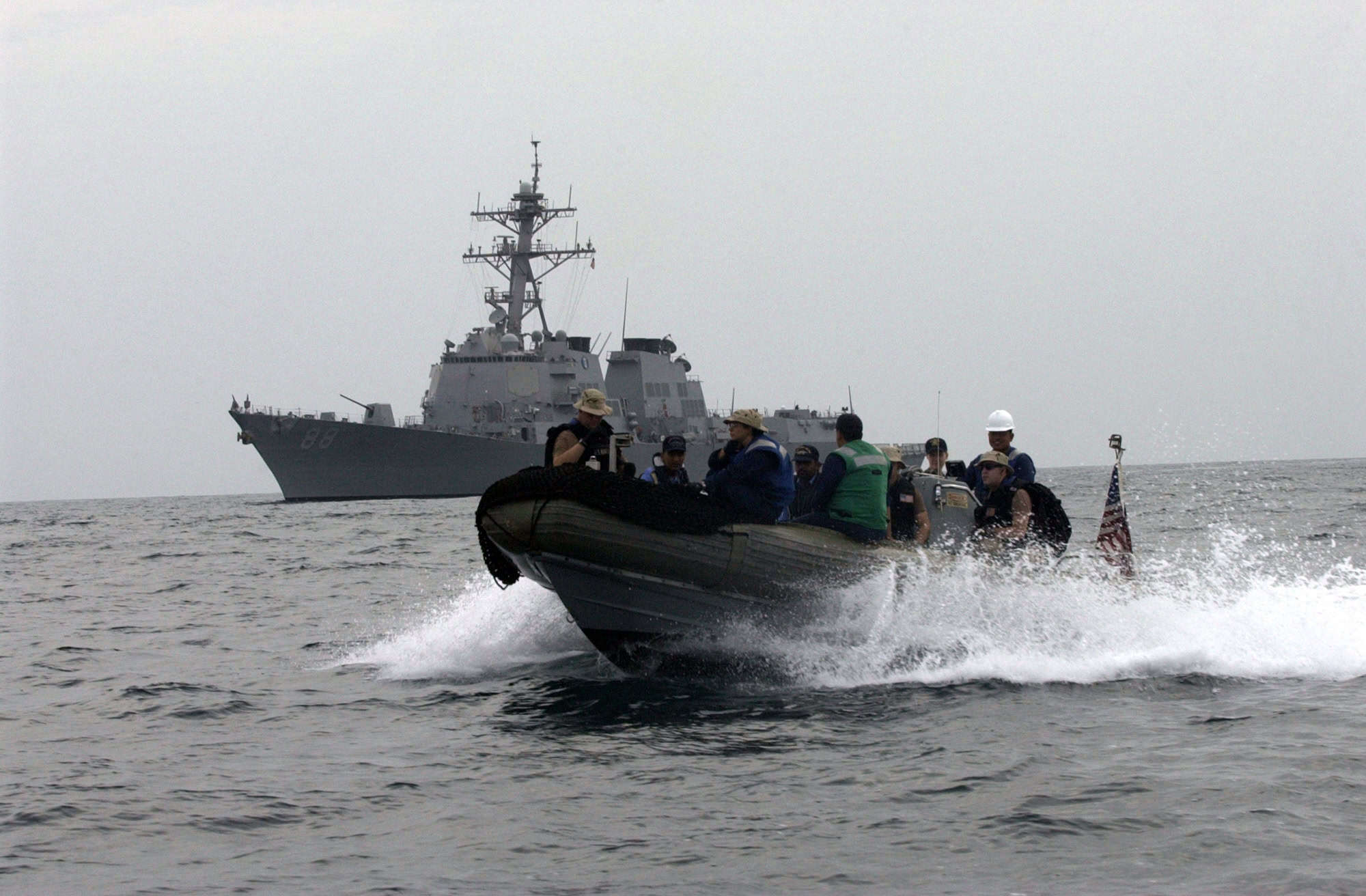
- Population reaching military age annually: 4,794,908
- Fit-for-service: 85,803,614
- Active military personnel: 654,000
- Reserve military personnel: 550,000
- Paramilitary personnel: 500,000
- Total military personnel: 1,704,000
- Military defense budget: $7,640,000,000 – #38 out of 145
- Military strength score and world rank: 0.2513 – #12 out of 145
Pakistan has a total population of 252.36 million. Along with its troops, this country has 121 naval vessels, 1,399 military aircraft, and 17,516 military vehicles (including 2,627 tanks, 600 MLRS units, and 3,291 artillery units).
Pakistan’s military history began with its formation in 1947, following its separation from India. This division would continue to be the source for animosity even in contemporary times. The first Indo-Pakistani War was fought over Kashmir, with more wars following in 1965 and 1971. The 1971 war ended in a major defeat for Pakistan and led to the creation of Bangladesh. Pakistan also played a role in the Soviet-Afghan War, supporting mujahideen fighters with U.S. and Saudi backing. Today, Pakistan maintains one of the world’s top 10 most powerful militaries.
The post These 10 Middle Eastern Nations Add Over 100,000 Military Age Recruits Every Year appeared first on 24/7 Wall St..
Click this link for the original source of this article.
Author: Chris Lange
This content is courtesy of, and owned and copyrighted by, https://247wallst.com and its author. This content is made available by use of the public RSS feed offered by the host site and is used for educational purposes only. If you are the author or represent the host site and would like this content removed now and in the future, please contact USSANews.com using the email address in the Contact page found in the website menu.

